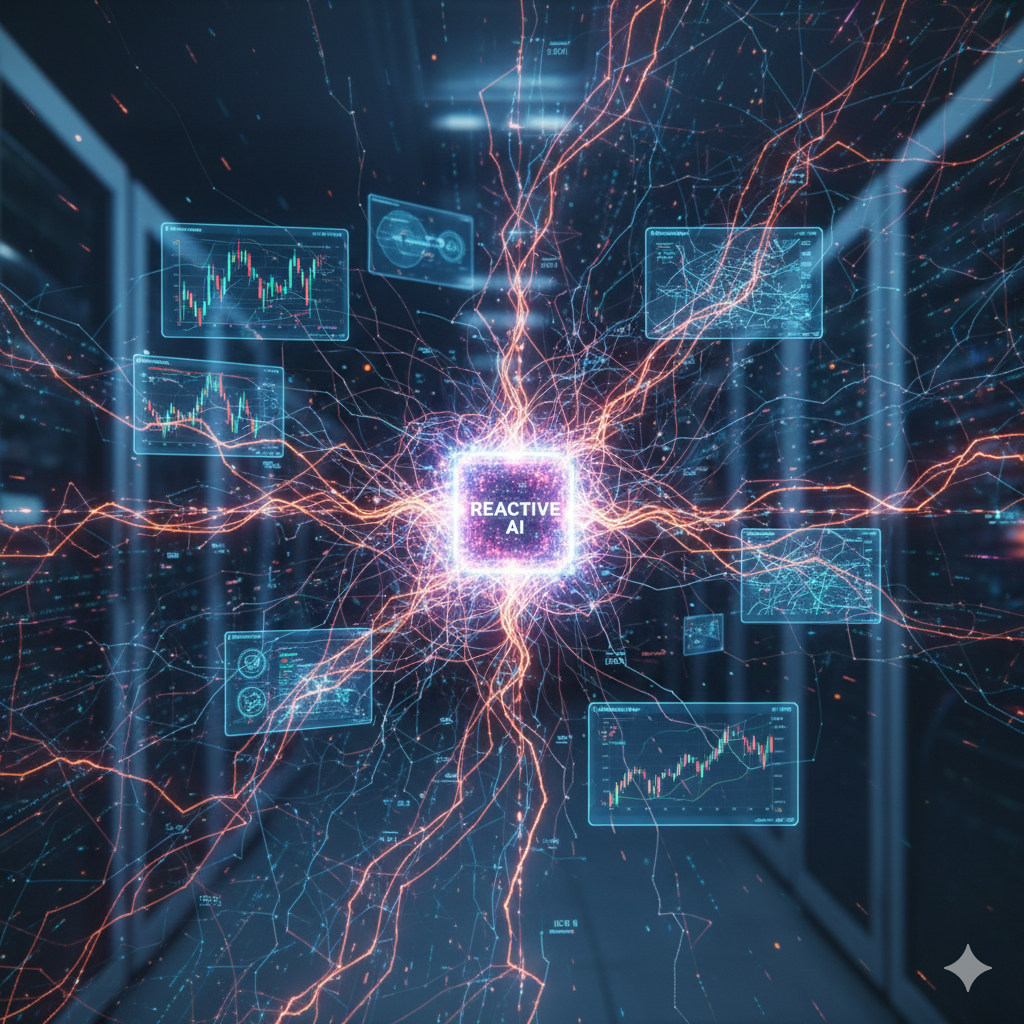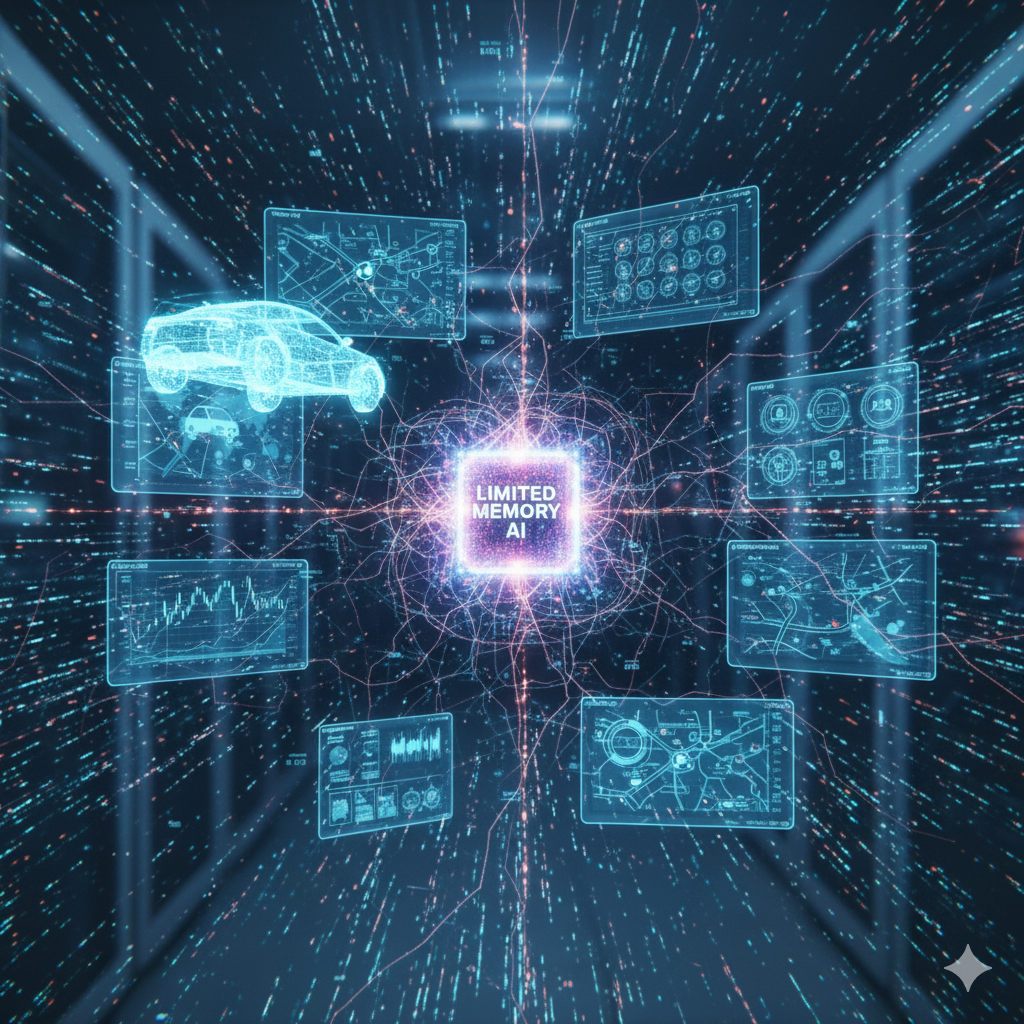AI Categories: Reactive & Limited Memory

Reactive AI?
Reactive AI represents the simplest level of artificial intelligence. These systems respond to specific inputs with predetermined behaviours, showing little or no variation in how they act. When a reactive AI encounters a situation it has seen before, it will respond in exactly the same way every time. Because of this, it doesn’t learn from previous experiences or plan ahead.
Even though reactive AI is the most basic type of AI we use today, creating systems capable of responding in this consistent, stimulus-based way was a major milestone. It laid the groundwork for more advanced forms of AI that came afterward.

Limited Memory AI
Limited memory AI differs from reactive AI because it can draw on past data, apply more advanced classification methods, and make decisions informed by previous experience.
A common example is the technology behind self-driving vehicles. These systems constantly monitor their surroundings—such as the speed and position of nearby cars—and combine this real-time information with stored observations from earlier situations. By interpreting and learning from this data, the vehicle can make safer, more informed choices on the road, far beyond the capabilities of a purely reactive system.
Despite this improvement, limited memory AI still falls under the category of narrow AI, as it lacks the ability to reason or think in the way humans do.

